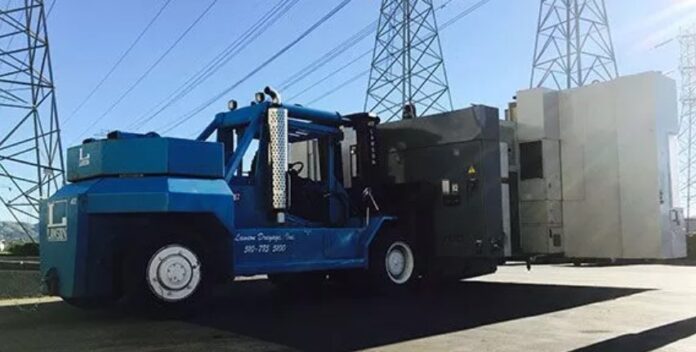Machinery riggers often start carrying out a rigging job without checking simple things such as the load capacity of the rigging machine. It is only when they have loaded the truck or trawler with heavy equipment that they realize it is not safe to carry out with the same setting. End result? They have to take off the load and start the whole process again with a vehicle which supports weight load. Not only did it cost extra effort and time, but also led to a bad reputation for rigging company due to project delay. In this article we have discussed five common problems machinery riggers come across all the time. These are preventable and avoidable mistakes which only need to be considered before carrying out any rigging job. Let’s make the process of rigging easy for heavy equipment mover.
1. Starting without knowing the Load Weight
To lift and transport machinery properly, the heavy equipment mover must know the exact capacity of rigging equipment. It is often overlooked aspect of machinery rigging which leads to project delay and an increase in rigging cost. It is not a very difficult task to gauge the weight of load because most of the times the weight is marked on the machine which is expected to move on a frequent basis. If however, it is not marked, the machinery riggers can determine the weight themselves by referring to handbook or catalog data, any prior shipping documentation, using industrial scale or dynamometer, or reviewing design document.
While calculating the total weight of the load, it is important to include the weight of rigging machine as well because slings, below-the-hook lifting devices, and other equipment are also going to contribute to the total weight capacity of the vehicle.
2. Lack of Inspection
Quite often heavy machinery movers do not inspect the rigging equipment safety services for damages or defects. A small or unnoticeable defect in the equipment being moved can become very obvious upon the completion of rigging process. At some points, the machinery riggers have transported defected equipment which was a huge safety hazard in itself. Therefore it is important to inspect the load before staring the process. It goes without saying that the vehicle being used for rigging must also be inspected regularly to ensure smooth completion of rigging process.
Rigging companies must subject their employees to rigging trainings at regular intervals so that they are familiar with what damaged equipment looks like and can keep themselves updated with good rigging practices.
3. Using the wrong devices or equipment
Homemade, modified, or makeshift devices are seen and used on a rigging site. These devices are not compliant, because the details about design modifications are unknown to machinery movers. Machinery movers don’t even know if they are being built from scratch or a specific part of them underwent a modification. In the absence of such valuable information, movers use these machines and often face mishaps or accidents during the rigging process.
Moreover, rigging requires careful planning while using the available equipment such as slings, hitch, hardware, etc. A lack of consideration of equipment capability to support the lift leads to safety hazard. Therefore, only that equipment should be used which can lift the weight safely. If you decide to stick with the same available resources, you must consider reducing the weight being lifted.
4. Not Using the Proper Sling Protection
During lifting heavy machinery, sling protection is overlooked which leads to safety hazard and other losses as it comes in contact with corners, protrusions, edges, etc. it is more important to consider sling protection when using choker and basket hitches because the sling is tightly wrapped around them and they make a direct contact with the load. If the sling is likely to make contact with any corner, it must be protected so that the sling is not damaged. Edge guards, magnetic protection, or sleeves can be used to protect sling from tearing or getting damaged. Not adopting protective measures can lead to a higher turnover of slings, project delays, damages to the load, and other damages to workers such as injury to and even loss of life.
5. Absence of Understanding the Structural Integrity of the Load
The structure of load is not taken into account during rigging. If partially full containers are lifted, the rigger might lose control due to misbalance caused by the shifting of load contents to one side. If the load is structurally unsound, the result is an unsafe lift and rigging. Before the lift takes place, it is critical to consider the contents type, and to ensure they are stable and won’t shift during rigging. Moreover, it must be ensured that the load is structurally sound to be rigged and lifted from one or more points.
Final Words.
At Lawson Inc. we are dedicated to provide you safe and secure rigging services in a timely manner. With our experience and expertise to rig heavy equipment, you can free yourself from the worry of rigging heavy machinery because we plan and execute each rigging to avoid any delays or losses. To get a quote, talk to our representative.






